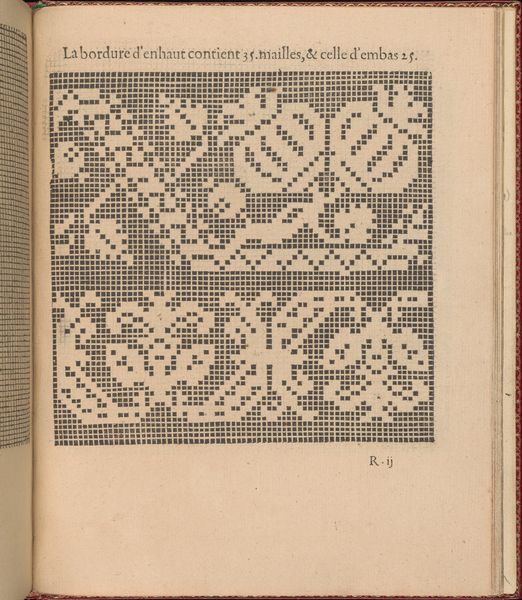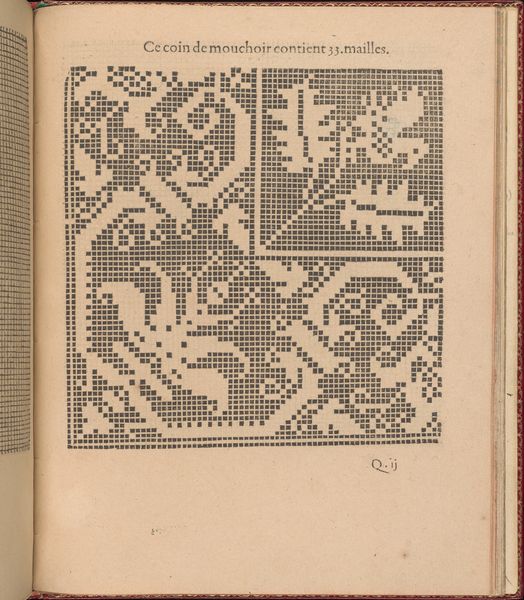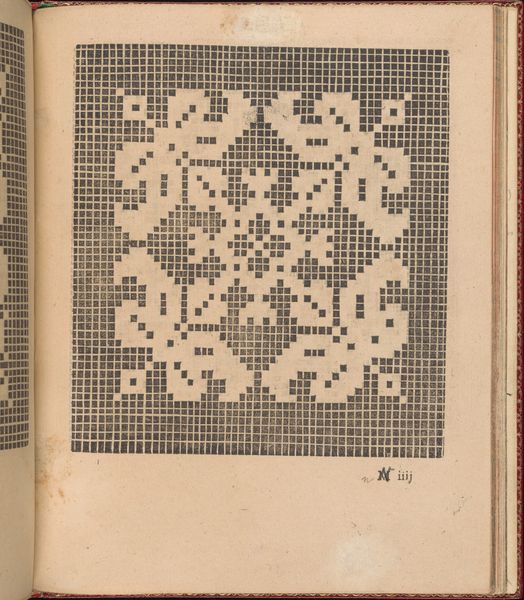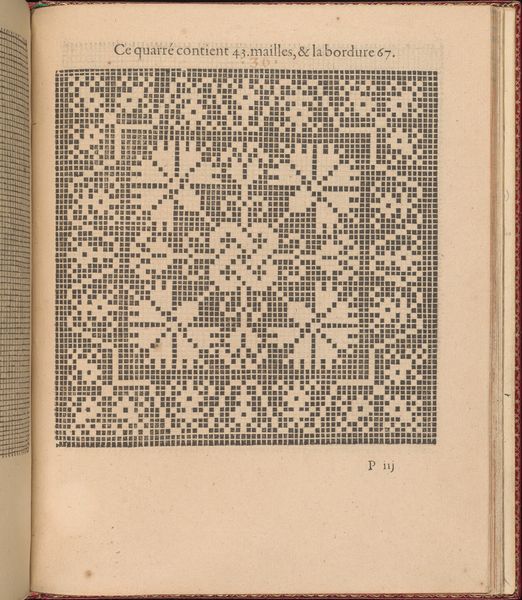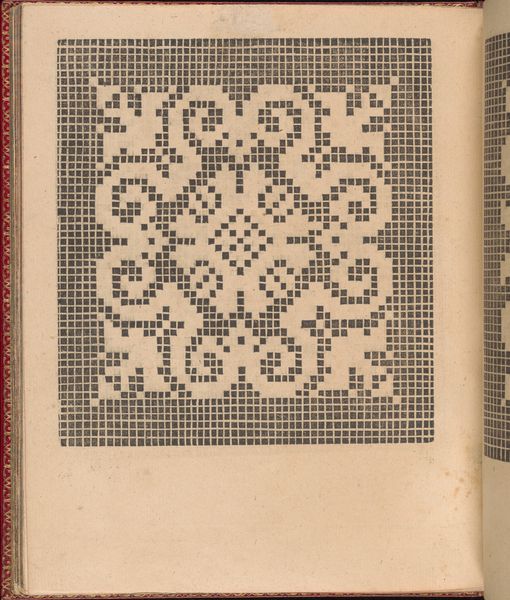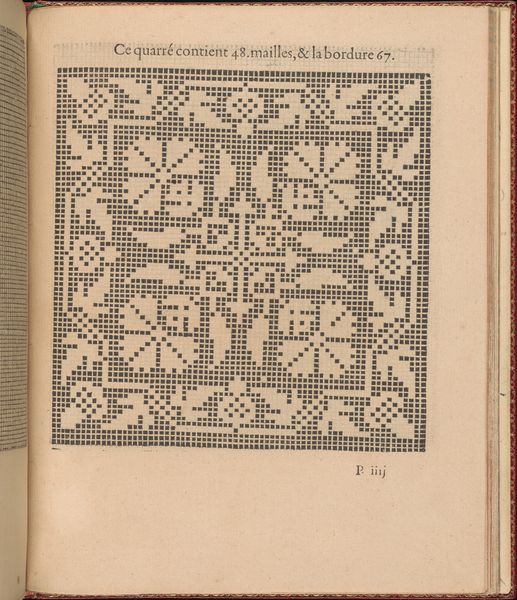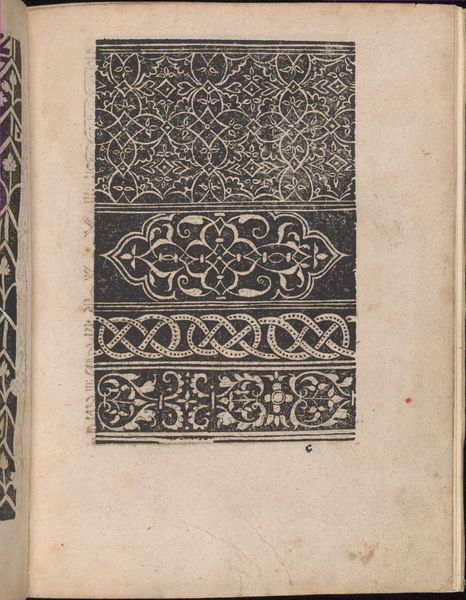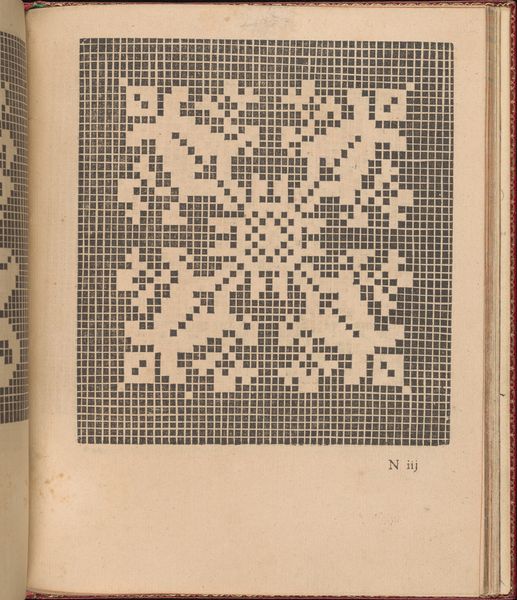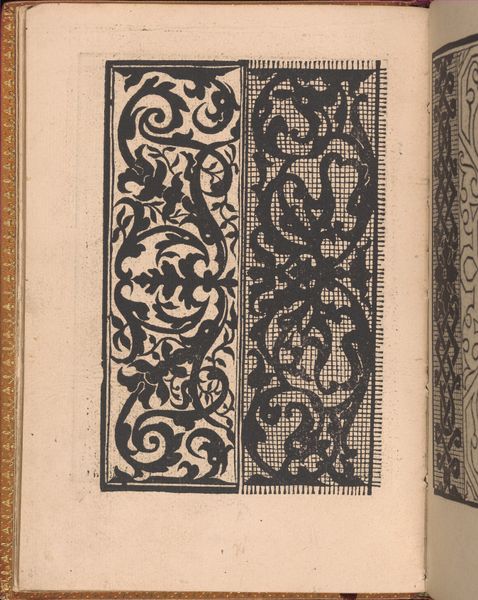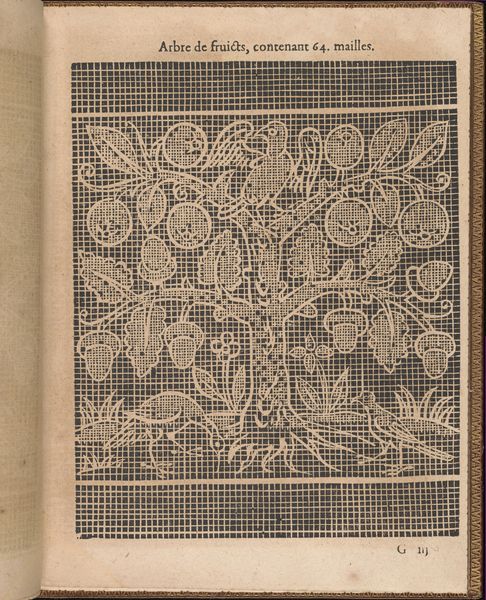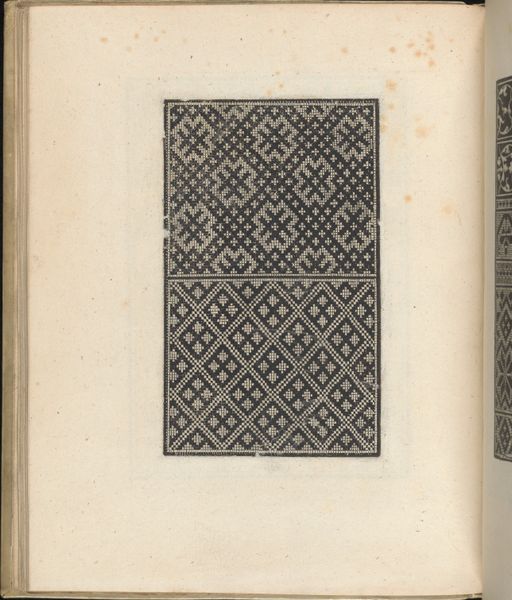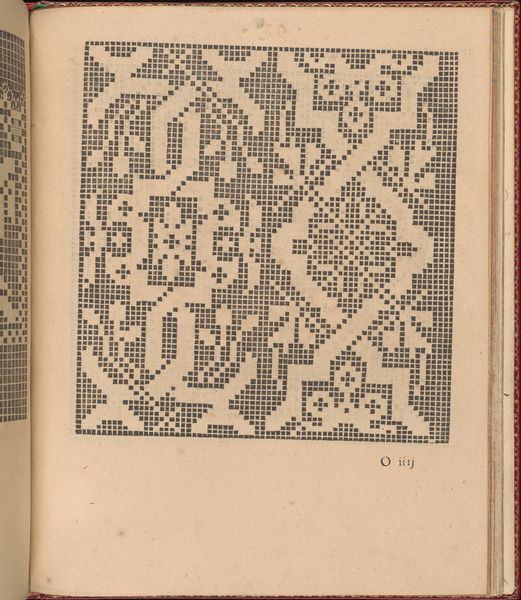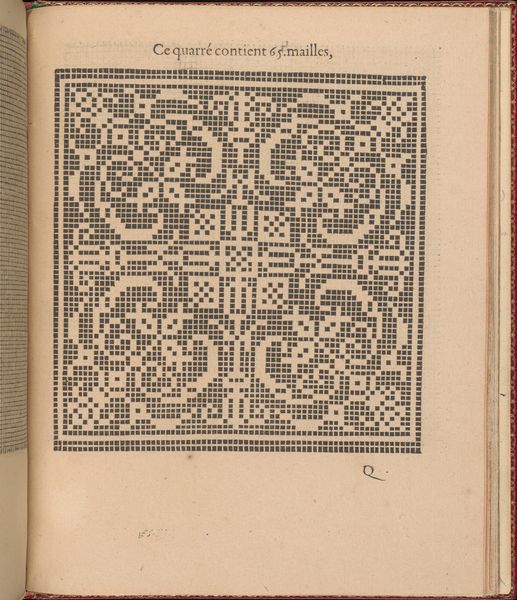
Les Singuliers et Nouveaux Portraicts... page 65 (recto) 1588
0:00
0:00
drawing, graphic-art, print, paper, engraving
#
drawing
#
graphic-art
# print
#
paper
#
11_renaissance
#
geometric
#
engraving
Dimensions: Overall: 8 1/16 x 6 5/16 in. (20.5 x 16 cm)
Copyright: Public Domain
Curator: Goodness, look at this! The level of detail is astonishing. It reminds me of early computer graphics. Editor: It does have a certain pixelated charm. This engraving comes from a book of lace patterns created by Federico de Vinciolo in 1588, titled *Les Singuliers et Nouveaux Portraicts…* This page specifically, "page 65 (recto)," showcases two bands of geometric patterns. Curator: Lace patterns...So these were meant to inspire? Did women carry these pattern books around like some stitch-witch grimoire? Editor: Indeed! Vinciolo's patterns offered new designs and encouraged skilled needleworkers. Lace held a position of both domestic labor and elaborate courtly attire. Publishing patterns standardized it to some degree but still retained room for inventive flourishes in execution. Imagine how this simple black and white design could explode in colour when interpreting these geometric grids with silk and thread. Curator: I like how each little square sort of builds these flowery tendrils; negative space blooms unexpectedly out of the density. It's like finding wildflowers in a meticulously organized garden. Do you think Vinciolo also participated in producing his design by making the patterns? Editor: That's the mystery with works on paper like these, especially books of patterns: where did Vinciolo's involvement start and stop? Was he actively engraving these plates? How were his original designs translated into repeatable forms, capable of influencing textile designs for generations to come? It's difficult to pinpoint one person's complete artistic journey with early prints. These lace designs also point to the larger system that upheld noble fashion trends throughout Europe, and served the rising middle class during the Renaissance. Curator: Well, wherever Vinciolo ended and the lacemakers began, there's something about the clarity of intention, like these patterns have survived and still hold ideas for the future. I may have to pick up some yarn. Editor: And what better legacy is there, than continuous recreation of images! Lace, in many ways, continues to carry that social exchange across time, where its geometric basis also lends itself nicely to emerging forms of technology, and abstraction.
Comments
No comments
Be the first to comment and join the conversation on the ultimate creative platform.
